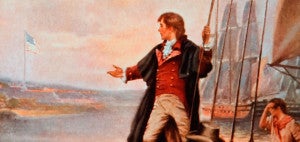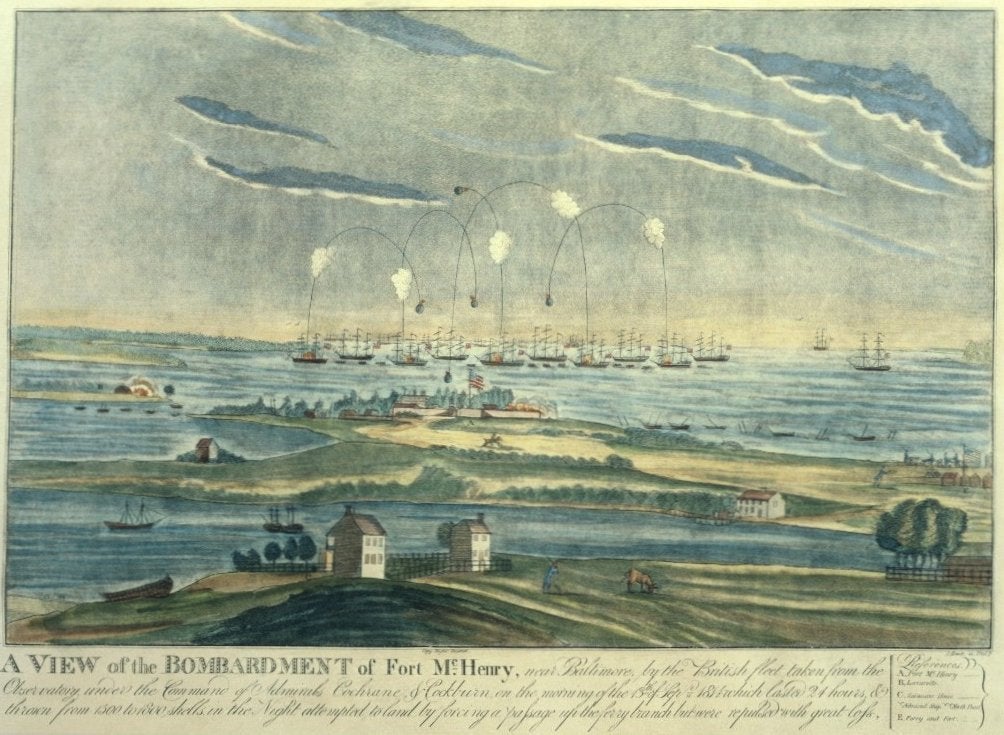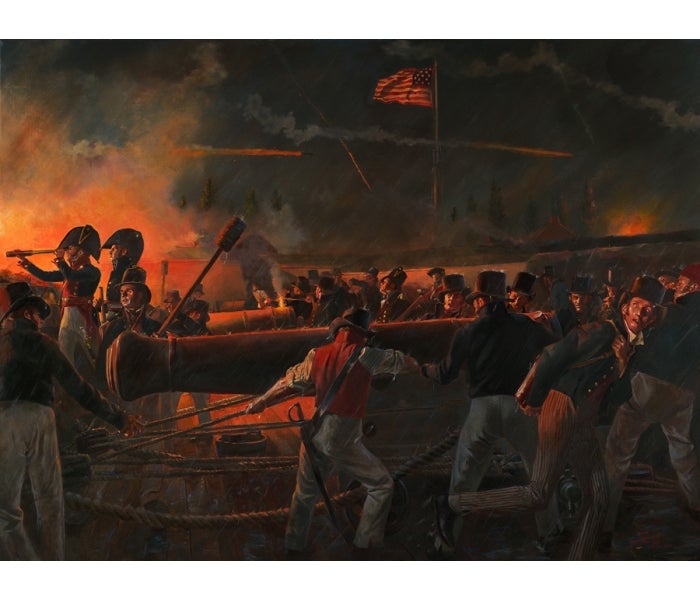Interdisciplinary Middle School Concentration
Grade Level: 5-8
Rebecca A. Cauthen, Maine Consolidated School
Description
This project will include lessons and activities for use in middle school classrooms that focus on the Star Spangled Banner. These resources will include ideas and projects for integration in history, social studies, music, art, physical education, language arts, writing, mathematics, and more. The primary purpose of these resources is for an all school celebration focusing on the Star Spangled Banner over the course of a week.
School wide:
Morning Announcements including a fun fact about the Star Spangled Banner and a recording of the anthem (including different genres throughout the week.)
Mormon Tabernacle Choir
https://www.youtube.com/watch?v=R0C51QlEkXo
Whitney Houston
https://www.youtube.com/watch?v=drDSALCKH_Y
Dolly Parton
https://www.youtube.com/watch?v=2fOWXs8t5wY
Metallica
https://www.youtube.com/watch?v=YkiOcK6PuD0
Sebastian De La Cruz
https://www.youtube.com/watch?v=m4EEpsNQojs
Armed Forces Choir
https://www.youtube.com/watch?v=9ETrr-XHBjE
Announcements/Trivia:
- The Star Spangled Banner was written in September 1814.
Quick Extension: How long has it been since the lyrics were written? - Francis Scott Key wrote four verses in his original setting. Today we usually only sing the first verse.
Quick Extensions: explore the other verses. Quick write: why did only the first verse become popular? - The Star Spangled Banner became our official national anthem in 1931.
Quick Extension: How old were Key’s lyrics at this time? How long ago was this? - The song’s first confirmed performance at a sporting event was at the 1918 World Series.
Quick Extension: How old were Key’s lyrics at this time? How long ago was this? What emotions may this cause for the athletes? The fans? How have those emotions possibly changed over time. - During World War II, the tradition of singing the anthem at sporting events spread.
Quick Extension: Discussion and/or writing. Why was this important? Why did this tradition continue.
Assembly:
Open with Presentation of the colors with local veterans. Performances will include items created during the week and may include: student made museum, song performances, poem presentations, short video, living flag, wax museum, etc.
Math:
1. Students will be able to measure 30 feet high by 42 feet wide and
visualize the area of the garrison flag. http://amhistory.si.edu/starspangledbanner/pdf/SSB_Math_K_2.pdf
2. Flag Math is a mixed concept math sheet
FLAG MATH (1)
Physical Education:
1. Defense of Fort McHenry re-enactment:
Language Arts:
1. Write a newspaper article or create an advertisement about the Star Spangled Banner – students may focus on the events of the battle, after the battle, the publishing of the sheet music, or a campaign for the Star Spangled.
2.Writing assignments could include: Personal narrative of what the Star Spangled Banner means to me, write your own poetry/lyrics to another significant event either historical or current.
3. Students will understand the difference between primary and secondary
sources. They will also be able to explain the importance and limitations of using primary
sources for historical research.
http://amhistory.si.edu/starspangledbanner/pdf/SSB_Sources_6_8.pdf
Science:
1. The museum environment and preservation.
Through discussion and brainstorming, students will learn about the
destructive impact of environmental factors on man-made artifacts and structures.
Upon completion of one or more activities, students will gain a concrete
understanding of the complexity of the science of preservation.
http://amhistory.si.edu/starspangledbanner/pdf/SSB_Museums_6_8.pdf
2. Smithsonian Founding Fragments – Banner Preservation
https://www.youtube.com/watch?v=t5zfFDT-pNo
History:
1. Students will be able to cite the origins and outcome of the War of 1812
and be able to place the creation of the Star-Spangled Banner in a chronological
framework.
http://amhistory.si.edu/starspangledbanner/pdf/SSB_History_Overview.pdf
2. Students will understand the difference between primary and secondary sources. They will also be able to explain the importance and limitations of using primary sources for historical research. http://amhistory.si.edu/starspangledbanner/pdf/SSB_Sources_6_8.pdf
3. Recreation of the battle in tableau, film, theater, wax museum, or museum.
4.Mary Pickersgill and the flag –
In this activity, students will watch and discuss a 12-minute video of a theater presentation created by the Smithsonian’s National Museum of American History. Ideas for extension activities are also included in this guide.
http://amhistory.si.edu/starspangledbanner/pdf/BroadStripesBrightStars.pdf
Art:
1. Students create 2 foot stars and create artistic representations of the anthem’s history.
2. How to make a 5 pointed star
https://www.youtube.com/watch?v=AKgHWjk3MB4
3. Analysis of primary sources of art work depicting the battle and subsequent events




